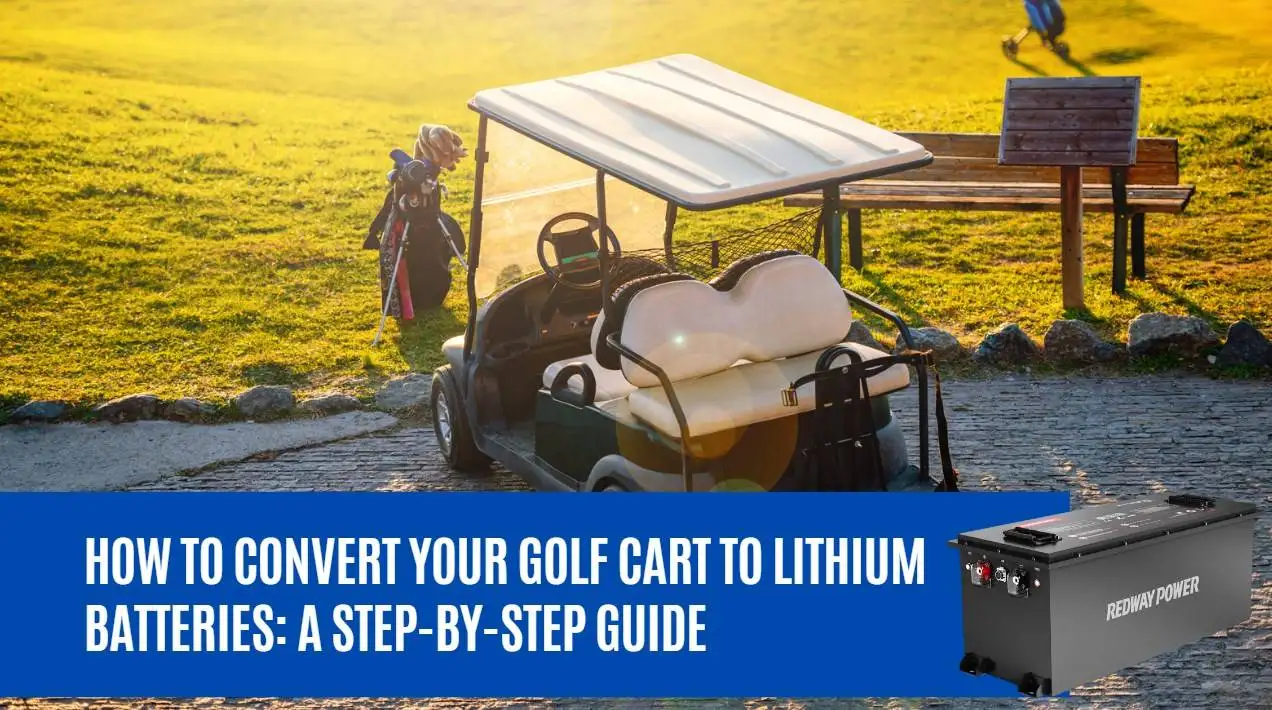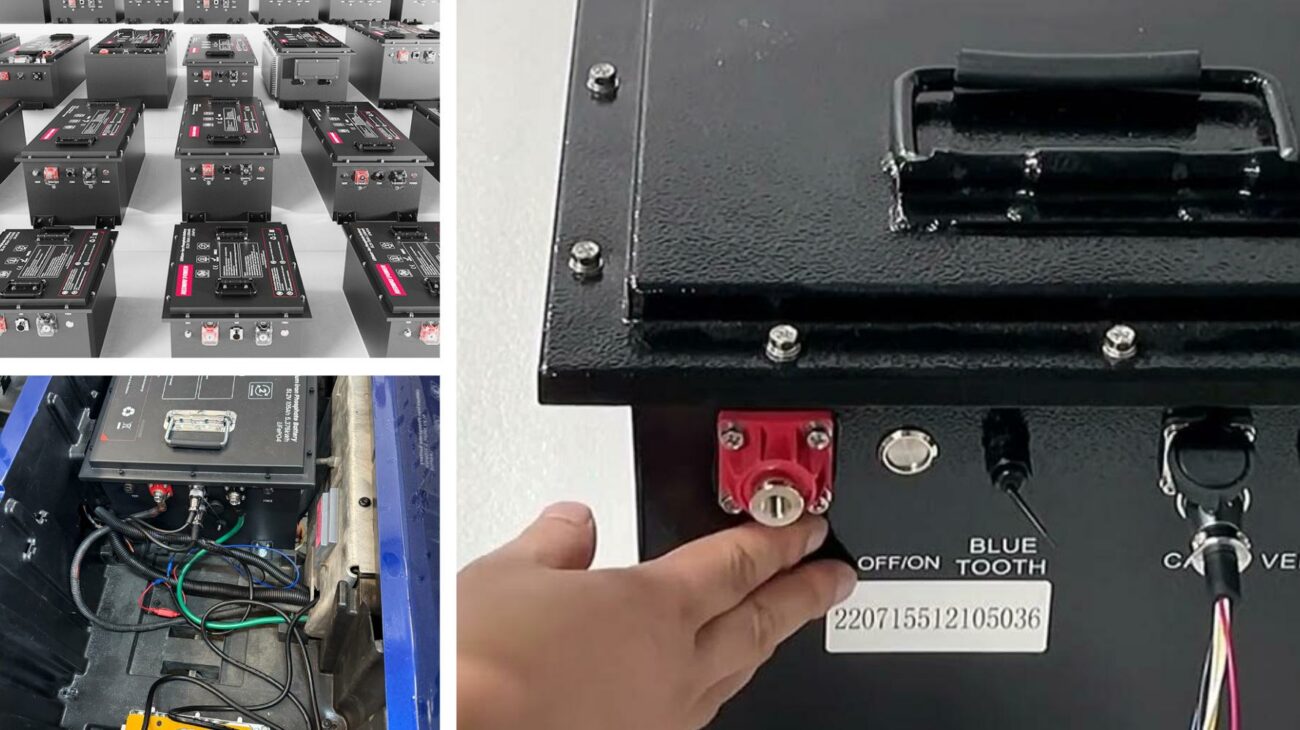Converting your golf cart to lithium batteries can significantly enhance its performance and efficiency. Lithium batteries offer advantages such as longer lifespan, lighter weight, and faster charging times compared to traditional lead-acid batteries. This guide provides detailed steps and considerations for a successful conversion.
What Are the Benefits of Converting to Lithium Batteries?
Lithium batteries offer longer lifespan, faster charging, reduced weight, and higher efficiency compared to lead-acid batteries. They provide consistent power output, require minimal maintenance, and improve overall golf cart performance, including acceleration and range.
Converting to lithium batteries offers numerous benefits:
- Longer Lifespan: Lithium batteries typically last 2-3 times longer than lead-acid batteries.
- Weight Reduction: They are significantly lighter, improving overall cart performance.
- Faster Charging: Lithium batteries charge more quickly, reducing downtime.
- Higher Efficiency: They provide better energy efficiency, allowing for longer usage between charges.
Chart: Benefits of Lithium vs. Lead-Acid Batteries
| Feature | Lithium Batteries | Lead-Acid Batteries |
|---|---|---|
| Lifespan | 2000-5000 cycles | 300-500 cycles |
| Weight | Lighter (up to 50% less) | Heavier |
| Charging Time | 1-4 hours | 6-12 hours |
| Efficiency | >90% | 70-80% |
How Do You Determine the Correct Voltage for Your Golf Cart?
Check your golf cart’s current voltage by counting the number of batteries and their individual voltage ratings. Common configurations are 36V, 48V, or 72V. Ensure the lithium battery replacement matches your cart’s system voltage for compatibility and performance optimization.
To determine the correct voltage:
- Inspect Existing Batteries: Count the number of batteries and their voltage ratings. For example, six 8-volt batteries indicate a 48V system.
- Match Voltage: Ensure that the new lithium battery pack matches your golf cart’s voltage requirements (36V or 48V).
What Tools and Materials Do You Need for the Conversion?
Essential tools include a socket wrench set, insulated gloves, battery cables, a lithium-compatible charger, and a Battery Management System (BMS). Materials needed include lithium batteries, mounting brackets, and proper connectors for secure installation.
Essential tools and materials include:
- Lithium Battery Pack: Ensure it’s compatible with your cart’s voltage.
- Charger: A charger designed specifically for lithium technology.
- Battery Mounting Brackets: To secure the new battery in place.
- Cables and Connectors: For making electrical connections.
- Basic Hand Tools: Wrenches, screwdrivers, pliers, wire cutters, etc.
These items are crucial for a successful conversion.
How Do You Remove Old Lead-Acid Batteries?
First, turn off the cart and disconnect the negative terminal. Remove battery cables and carefully lift out each battery using protective gloves. Clean the battery tray and check for corrosion before installing new lithium batteries. Dispose of old batteries properly.
To remove old lead-acid batteries:
- Disconnect Power: Ensure that the golf cart is turned off and disconnected from any power source.
- Remove Cables: Start by disconnecting the negative terminal followed by the positive terminal.
- Take Out Batteries: Carefully lift out each battery, using a battery puller if necessary due to their weight.
Always wear protective gear when handling batteries.
What Steps Should You Follow to Install Lithium Batteries?
Place the lithium batteries in the tray, ensuring they match the voltage configuration. Secure them with brackets, connect the positive and negative terminals correctly, and use high-quality battery cables. Finally, attach a lithium-compatible charger before powering on the system.
Follow these steps:
- Place New Batteries: Position the lithium batteries in the battery compartment, ensuring they fit securely.
- Connect Terminals: Connect positive terminals first, followed by negative terminals, ensuring all connections are tight.
- Secure with Brackets: Use mounting brackets to secure the batteries in place.
Proper installation ensures safety and functionality.
How Do You Connect the Battery Management System (BMS)?
The BMS connects between the lithium battery pack and the golf cart’s electrical system. Attach the BMS terminals to the corresponding battery leads, ensuring proper polarity. The BMS regulates charging, prevents over-discharge, and balances cells for optimal performance.
Connecting a Battery Management System (BMS) involves:
- Follow Manufacturer Instructions: Each BMS may have specific connection requirements.
- Connect Wires Properly: Ensure that wires are connected according to color codes (positive and negative).
- Double Check Connections: Verify all connections are secure before powering on.
A BMS helps monitor battery health and prevent overcharging.
What Maintenance Is Required After Conversion?
Lithium batteries require minimal maintenance. Periodically check for secure connections, monitor charge levels, and keep the terminals clean. Unlike lead-acid batteries, they do not need water refilling or regular equalization charging.
Post-conversion maintenance includes:
- Regular Inspections: Check connections and battery condition periodically.
- Charge Maintenance: Keep the battery charged between 20% and 80% for optimal longevity.
- Clean Terminals: Regularly clean battery terminals to prevent corrosion.
These practices help maintain battery health and performance.
How Can You Ensure Optimal Performance of Lithium Batteries?
Use a lithium-compatible charger, avoid deep discharges, and keep batteries within the recommended temperature range. Store the golf cart in a cool, dry place and avoid excessive vibration or shock to maximize battery life.
To ensure optimal performance:
- Use Compatible Chargers: Always use chargers designed specifically for lithium batteries.
- Monitor Temperature: Avoid exposing batteries to extreme temperatures during storage or operation.
- Avoid Deep Discharge: Prevent discharging below recommended levels (usually around 20%).
These steps help maximize efficiency and lifespan.
What Are the Best Practices for Charging Lithium Batteries?
Charge lithium batteries with a charger specifically designed for them. Avoid overcharging by using a smart charger with an automatic shutoff. Charge the batteries after each use but prevent deep discharges below 20% for prolonged lifespan.
Best practices include:
- Charge Regularly: Keep your battery charged within recommended levels.
- Avoid Overcharging: Disconnect once fully charged to prevent damage.
- Charge in a Safe Environment: Ensure good ventilation during charging.
Following these practices enhances safety and performance.Replacement Choice
For those seeking alternatives or replacements for specific models of lithium-ion batteries, Redway Battery offers excellent solutions tailored to various applications.
Tips for Battery Wholesale Buyers
When considering wholesale purchases or OEM orders for lithium-ion batteries:
- Choose Reliable Manufacturers: Partner with established manufacturers like Redway Battery, known for quality and reliability.
- Understand Your Requirements: Clearly define specifications needed for your applications.
- Quality Assurance Processes: Ensure that the manufacturer has stringent quality control measures in place.
Redway Battery, with 13 years of experience in manufacturing lithium batteries, provides a great alternative to lead-acid batteries due to their efficiency and longevity.
Redway Battery Expert Insight
“Converting golf carts to lithium batteries not only enhances performance but also contributes significantly to sustainability,” states an expert from Redway Battery. “By following proper installation procedures and maintenance guidelines, users can enjoy reliable power while minimizing environmental impact.”
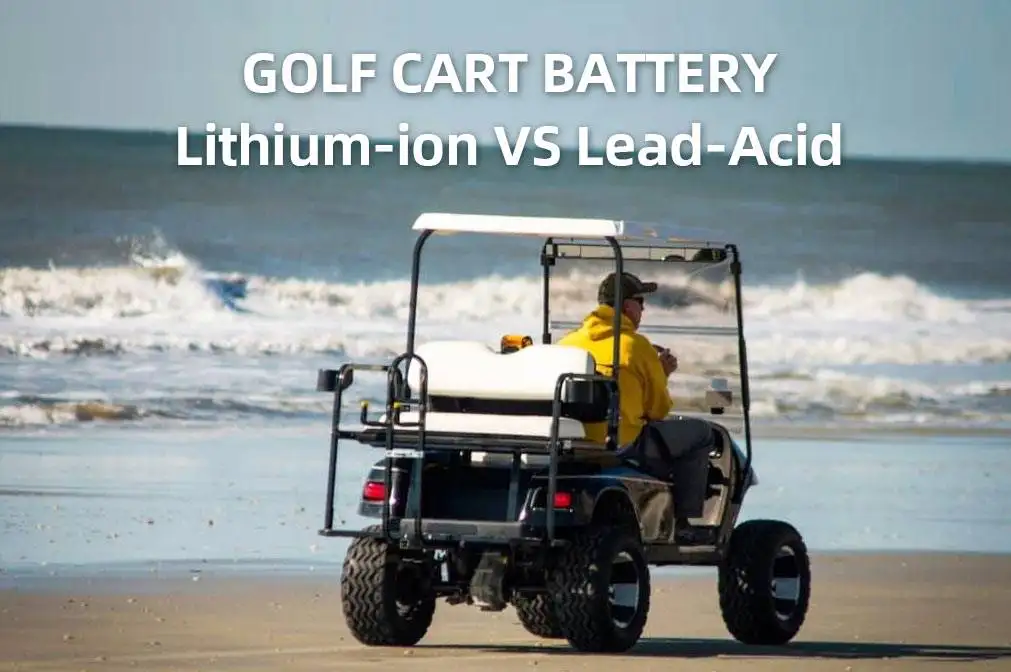
In addition to these advantages, the environmental benefits of lithium-ion technology contribute to a cleaner and greener future. Make the smart switch today for enhanced energy efficiency, extended lifespan, improved performance, and positive environmental impact.
Lithium ion golf cart Battery vs Lead acid golf cart Battery
Lithium ion batteries for golf carts offer advantages such as lighter weight, longer lifespan, reduced maintenance, and faster charging times. They provide a more balanced and maneuverable golf cart experience. In contrast, lead acid batteries are more affordable upfront but require more frequent replacements and have a higher environmental impact.
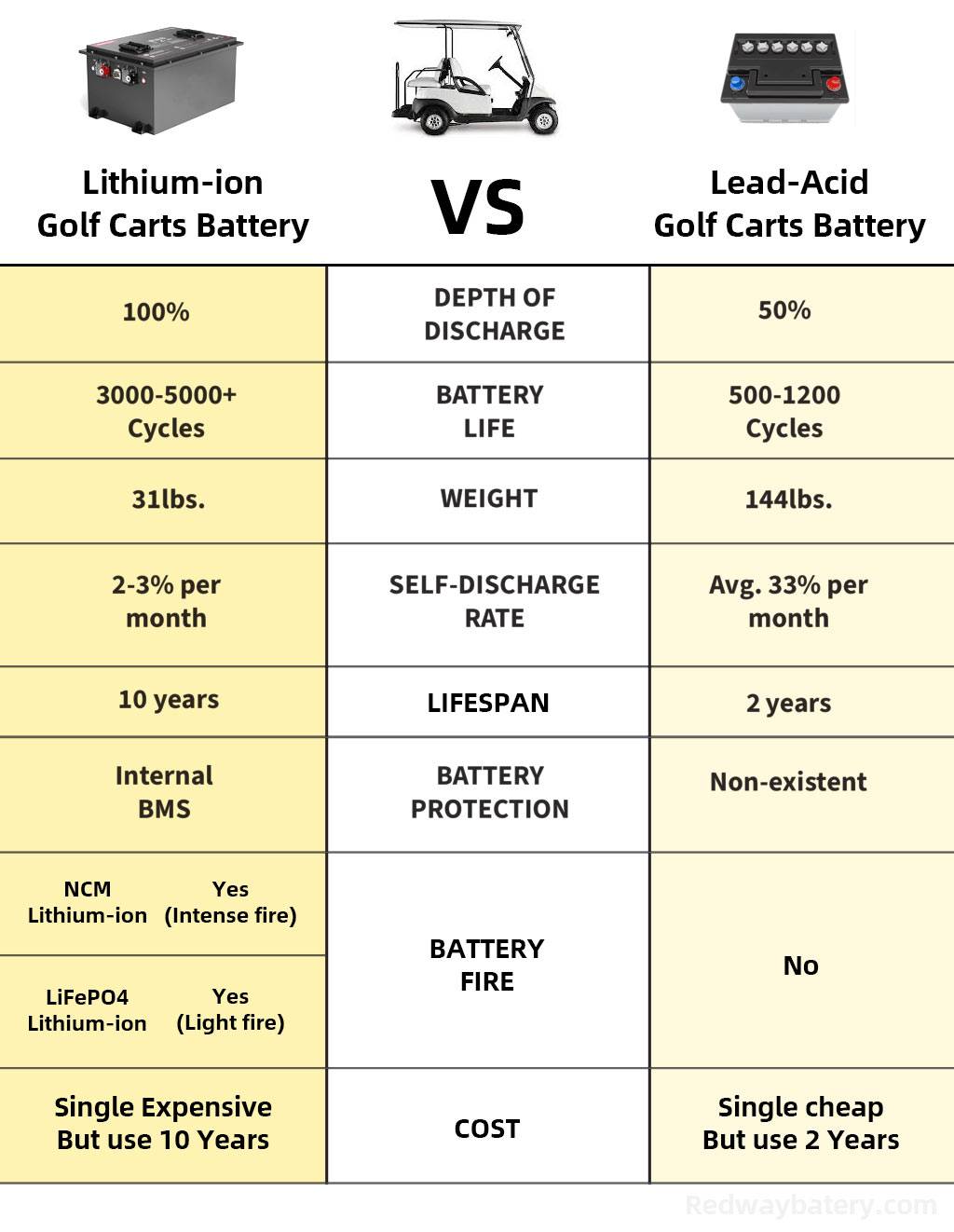
Ultimately, the choice between lithium-ion and lead-acid batteries depends on your specific requirements, budget, and preferences. Consider factors such as usage patterns, desired performance, and long-term cost when making your decision.
Step-by-Step Guide to Converting Your Golf Cart
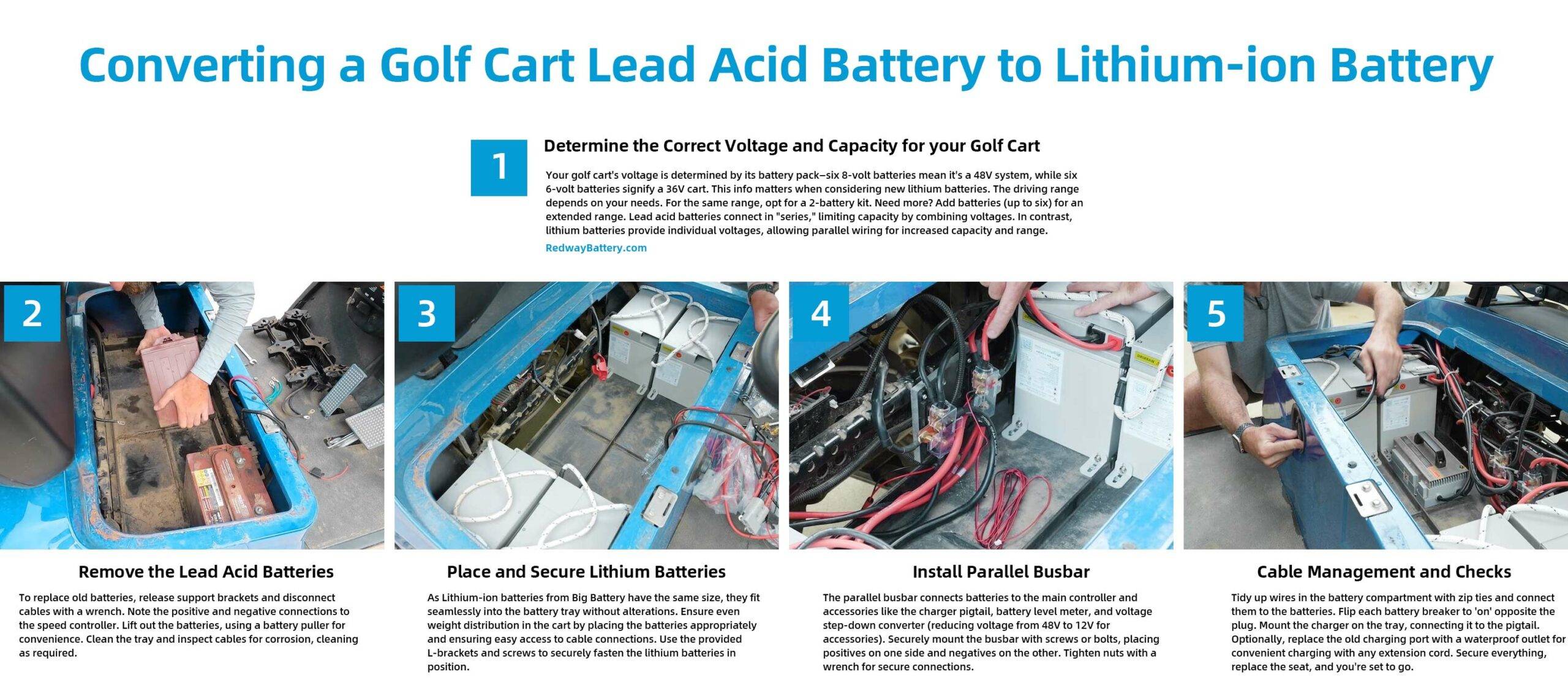
Necessary Tools and Materials
Safety Precautions to Keep in Mind
Troubleshooting Common Issues
Tips for Maintaining Your Lithium-Powered Golf Cart

By adhering to these tips, you’ll ensure your converted golf cart remains reliable and performs optimally for years to come.


